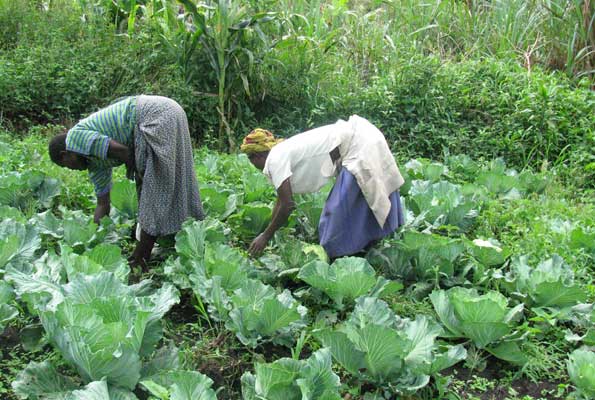By Christina Malmberg Calvo
Agriculture is Uganda’s ‘green gold’ that can transform the economy and the lives of farmers. Why it is then that Uganda’s well documented agricultural potential is not realized? What specific public-sector policies and actions are required to unleash the entrepreneurial energy of Uganda’s largest private sector actors—its farmers?
These and other questions are tackled in a new report we’ve launched jointly with the Government of Uganda, titled, “Closing the Potential-Performance Divide in Ugandan Agriculture.” It provides an unprecedented review of the structural context of Ugandan agriculture, its main actors, and the trends, opportunities and challenges the sector is facing.
Agriculture is the backbone of the economy, contributing a quarter of the national gross domestic product (GDP), and employs 70 percent of the population. The sector, however, is growing at a slow pace – way below its potential, with annual output growth at only 2 percent over the last five years. In comparison, East African Community members have seen annual output growth as high as 5 percent. However, in that same period, Uganda’s population has grown at 3.3 percent per annum.
Total factor productivity – which determines the efficiency and utilization of what is put into agriculture – has been negative for the last 18 years. The below par performance should be of concern to all stakeholders for a sector that is at the heart of the livelihoods of majority of Ugandans, and the economy.
So how can Uganda harness these opportunities for long term growth in the sector? How can the investment into agriculture match its output performance?
The report identifies three priority areas for policy action and investment, namely, (a) commercialization through value-addition and trade; (b) strengthened public institutions and policy, and (c) enhanced resilience of agriculture production and rural livelihoods.
Promoting commercialisation of agriculture through value addition and trade offers prospects for long-term growth and transformation of Uganda’s agriculture. Involving the private sector can provide much needed financing, allowing smallholder farmers to commercialize and get more returns. Most financial institutions are unwilling to extend credit to the sector because farmers often don’t have collateral, are too remote and this increases the institution’s transaction costs when there are no physical banking facilities in the areas. There are also too many variables with the rain, commodity prices and pests and diseases.
Risk can be minimized through warehouse receipt systems to provide collateral as alternatives to land titles and fixed assets. Credit guarantees, where larger ventures can offer protection to borrowers in small agribusiness, can cover default risk and build credit. With the booming domestic and regional demand for high-value foods arising from income growth, urbanization, and dietary shifts offer massive opportunities for Ugandan farmers, for value chains beyond farm production, and for better jobs in agriculture.
Like farmers elsewhere, Ugandan farmers are plagued by climate change including severe droughts, flood and crop pests and animal disease outbreaks. Uganda can refocus its extension system for social protection and teach farmers climate-smart soil and water management practices. The rural areas, which produce most of Uganda’s agriculture, are unable to adapt quickly to climate change and that hinders the growth of agriculture under present climate trends. The country is estimated to be losing from 4 to 12 percent of GDP annually mostly due to soil erosion.
The public extension system, National Agricultural Advisory Services (NAADS) would reduce costs and increase efficiency if they used technology as well. It does not have to be sophisticated. You are likely to reach more numbers with a radio announcement than with field visits. Radio programs can speak to good practices and include call-in programs.
Adoption of technology is another untapped area that could have a positive impact on productivity. ICTs like mobile phones enable better access to information and less transaction costs, all of which translate to higher incomes – and especially for women farmers, who adopt technology faster. Among coffee farmers, households using mobile money also receive better prices and sell more coffee.
All of these have to go hand-in-hand with more efficient public policies, and stronger coordination from the centre right down to the local governments. Some of the public policies have had repercussions like NAADS free input distribution mandate crowding out the private sector from seed distribution. Still, utilising public resources wisely to invest in complementary public goods and services such as agricultural research to keep updated on the latest climate developments and farm practices is key, as is development of good roads and expanding access to energy so that farmers spend less money moving produce, and to avoid post-harvest losses.
The public agencies have to step up and work in a more coordinated fashion. There should be more and better data including some district-level statistics, public expenditure reviews, policy analysis and policy monitoring. For agriculture to support the economy in the way we want it to, we have to invest in it and also have the right policies. It also requires politics not to interfere with the sector, but rather to enable investment in Uganda’s agriculture.
The Writer is the World Bank Country Manager for Uganda




